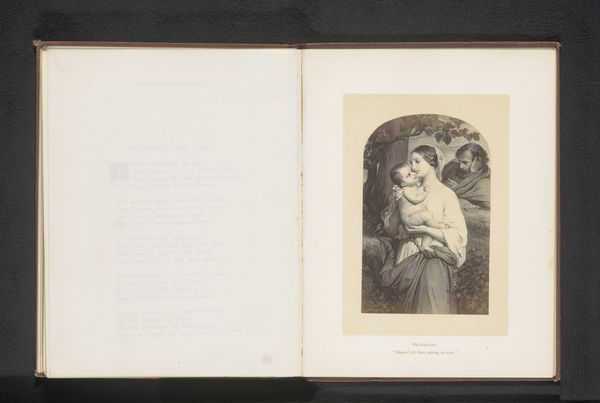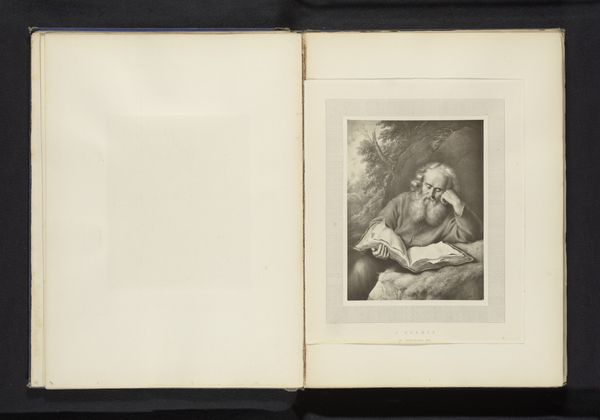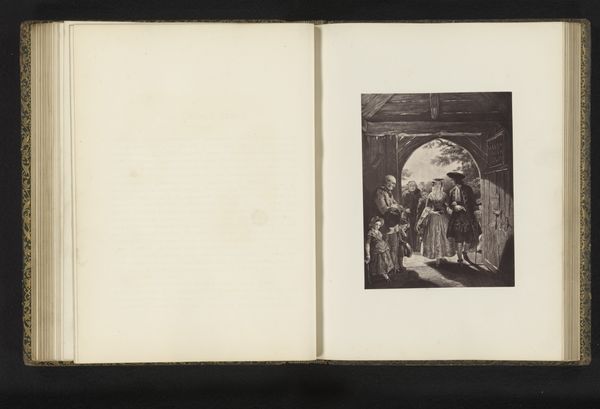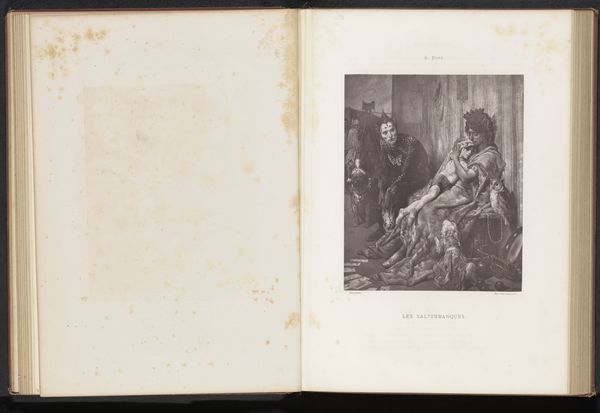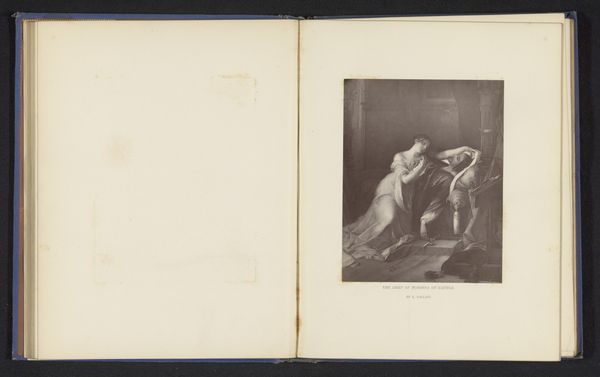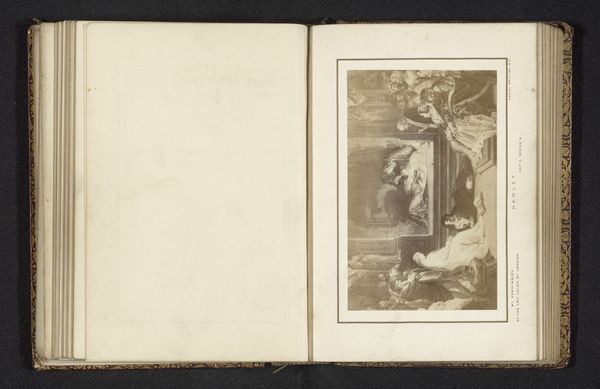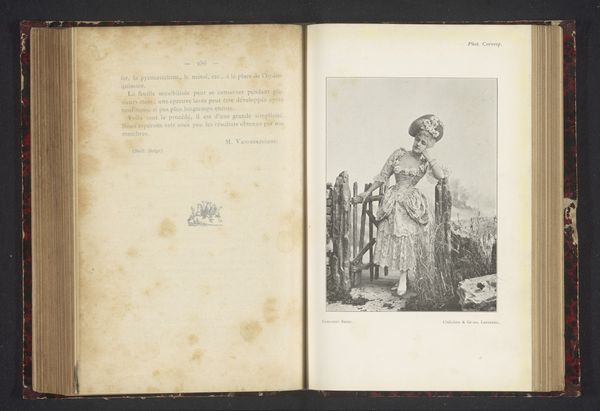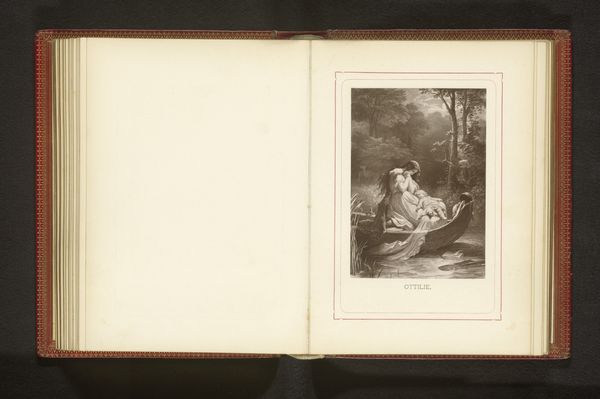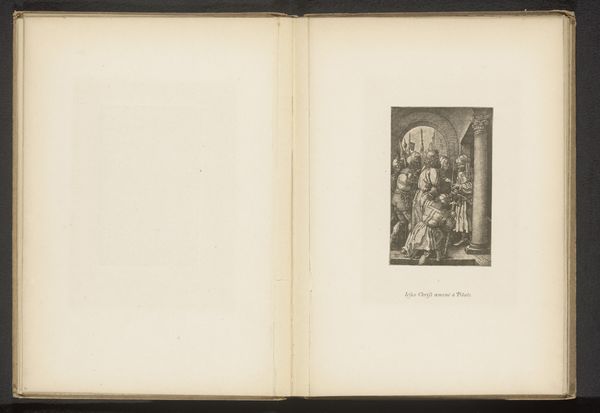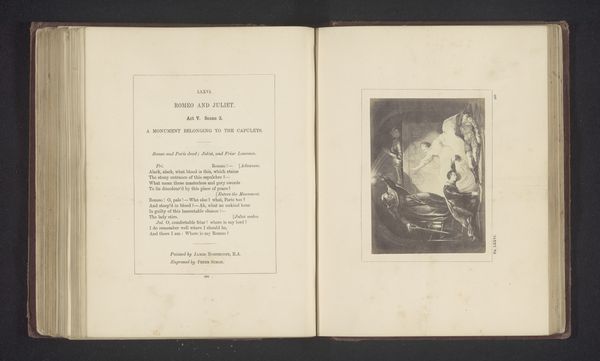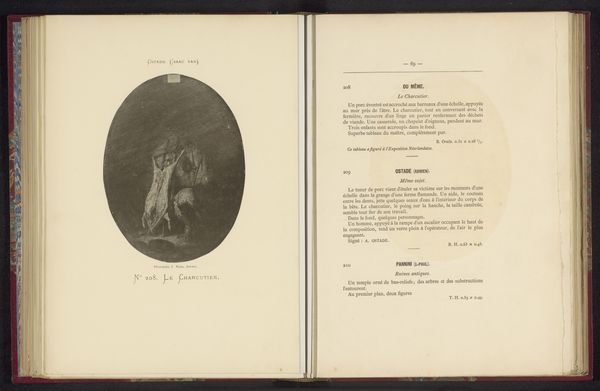
drawing, print, paper, photography, albumen-print
portrait
drawing
aged paper
homemade paper
medieval
paperlike
impressionism
book
sketch book
personal journal design
paper
photography
personal sketchbook
hand-drawn typeface
fading type
thick font
albumen-print
historical font
monochrome
Dimensions: height 235 mm, width 170 mm
Copyright: Rijks Museum: Open Domain
Curator: Here we have an intriguing albumen print from before 1885, attributed to Frederick Hollyer: "Christ the Child." What strikes you first about it? Editor: It evokes a stark sense of vulnerability. The child is so small and seemingly exposed. The image, though monochromatic, carries a somber, almost unsettling tone for what one might expect from such a subject. Curator: Albumen prints were popular in the mid-to-late 19th century. Photography was increasingly democratized. Hollyer, however, wasn't just any photographer. He was renowned for his reproductions of paintings and drawings, often associated with artistic and intellectual circles of his time. Editor: Knowing this was reproduced as an image changes everything, its not a true snapshot, but an attempt to recreate something with inherent religious meaning. This is a Victorian era imagining of a medieval artistic ideal. The figure, tightly swaddled, contrasts starkly with the open space of what seems like aged or homemade paper, bringing forward notions of abandonment and a return to simpler living. Is there something there? Curator: Absolutely. Think about the Victorian era’s fascination with medievalism, their yearning for a perceived simpler, more devout past amid industrial change. Hollyer taps into that sentiment, and makes the work deeply unsettling, which really is in line with some of the political turmoil in Britain in the mid to late 1800s. Editor: How interesting it uses this return to Medieval times, especially because these are turbulent periods. By employing photography, it makes religious sentiment accessible, for drawing closer to these events while they’re happening now! I hadn't considered the choice of medium within that specific framework. Curator: The act of reproduction also changes the object from one of fine art, and renders it a ubiquitous object to share political meanings during times of conflict. It's an fascinating dance between religious iconography and social critique. Editor: A potent reminder that even seemingly sentimental imagery can be deeply entwined with the political undercurrents of its time, no wonder that tension made me feel slightly uneasy! Curator: Indeed. A simple glance isn't enough; history invites us to look much deeper.
Comments
No comments
Be the first to comment and join the conversation on the ultimate creative platform.
